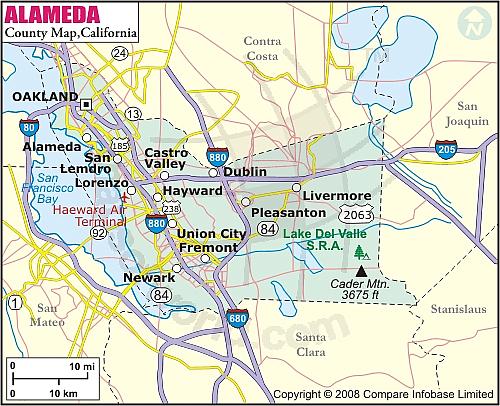HIV/AIDS Crisis Still a State of Emergency in Alameda County

It has been more than 10 years since the severity of the Bay Area's HIV/AIDS crisis generated a state of emergency declaration by Alameda County, but the sirens have yet to stop sounding.
As National Black HIV/AIDS Awareness Week gets under way, its existence and continued need show how far city leaders and health officials have to go to reach their goal of ending the crisis.
One of the major obstacles in reaching the goal is that a state of complacency -- instead of urgency -- has set in, said Kabir Hypolite, acting director of the Alameda County Office of AIDS Administration.
"There's a perception that the crisis is over, which is definitely not the case," Hypolite said.
More than 7,000 cases of AIDS were diagnosed among Alameda County residents from 1980 to 2006, the latest data available from the county. Of the people diagnosed with AIDS since 1998, about 20 percent have died.
At the heart of the crisis lies Oakland.
Each year, 54 percent to 65 percent of diagnosed AIDS cases come from Oakland, according to the county.
Hypolite said that East and West Oakland are concentrated with AIDS sufferers.
Along 98th Avenue, International Boulevard and the Fruitvale area, there are many prostitutes who may be carrying HIV or AIDS, said Gloria Lockett, co-founder and executive director of Cal-PEP, which provides free HIV/AIDS testing year-round.
However, she said she is particularly concerned with people who are not sex workers who may be promiscuous but think HIV/AIDS will not affect them.
Many black churchgoers who fall into this category are "in denial," Lockett said.
The African-American community has been especially hard hit by the HIV/AIDS crisis.
Since the declaration of a state of emergency in 1998, African- Americans have overtaken whites as the race with the highest proportion of annual AIDS cases.
"People just don't want to claim it. They don't think it's their problem," Lockett said.
Charley Hames, pastor of Beebe Memorial Cathedral, said that his church has chosen to be proactive in combating the spread of HIV/ AIDS by participating in free testing events this past summer so that people will become educated.
"It's not condoning any behavior. It's just saying, 'We love you enough to say take care of yourself,'" he said.
Hypolite said that black churches need to play more of a role in HIV/AIDS outreach efforts.
Hames said his church is following the model of Jesus Christ, who went around healing lepers. Hames described leprosy as the HIV of Christ's day.
"I want to reach people where they are and be able to touch them in such a way to see that God is still real," he said.
Hames' church participated in a free testing event with Get Screened Oakland this past summer. Over the summer, black leaders came together and publicly renewed their commitment to combating the epidemic.
Cathy Adams, founding president of the National Coalition of 100 Black Women-Oakland, Bay Area chapter, said during the summer that outreach efforts to city youths were lacking.
Last week, she said youth outreach remains an issue. "In our messages, something is missing."
The group initiated a billboard campaign with nearly 30 billboards across the city this past fall. On World AIDS Day on Dec. 1, the group held free testing events across the city in which at least two people -- including a 26-year-old woman who had seen the billboards -- tested positive for HIV.
As the crisis rages on, community leaders are concerned about how much they are going to be able to do with program funding declining in the midst of the state budget crisis and the nationwide economic downturn.
Hypolite said the county already lost $800,000 in state funding for prevention efforts, half of its budget.
On Nov. 18, people from the community led a protest through Oakland protesting the lack of
attention devoted to HIV/AIDS outreach. The march marked the 10th anniversary of the declaration of a state of emergency.
"The message was 'You haven't paid enough attention to this. You've been neglectful of the needs of the community. Put that urgency back into the state of emergency,'" Hypolite said.
Hypolite, who has been in his position since the start of 2008, said historically that there have been complaints that HIV/AIDS do not get due attention, especially with regard to the black community.
It is challenging to generate urgency for the HIV/AIDS crisis because of all of the other issues Alameda County is facing, such as teenage pregnancy and homicide, he said.
But as the sirens continue to sound as the state of emergency lingers, Hypolite said he is dedicated to turning things around but will need the help of the community.
"While I do have a responsibility for administering federal funds and state funds, I also know that when people come together, when human beings come together, they can do a lot with or without federal funding," he said. "You can talk to your family members. You don't need federal funding to do that."
By the Numbers:
-10 Years since a state of emergency was declared for the local HIV/ AIDS crisis.
-7,000 Cases of AIDS diagnosed in Alameda County from 1980 to 2006.
-54 to 65 percent of all new Alameda County cases of AIDS diagnosed each year are from Oakland.
Source: Alameda County Office of AIDS Administration
(c) 2009 Oakland Tribune

